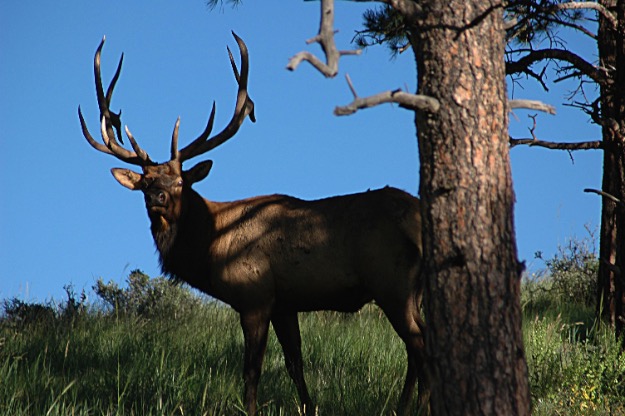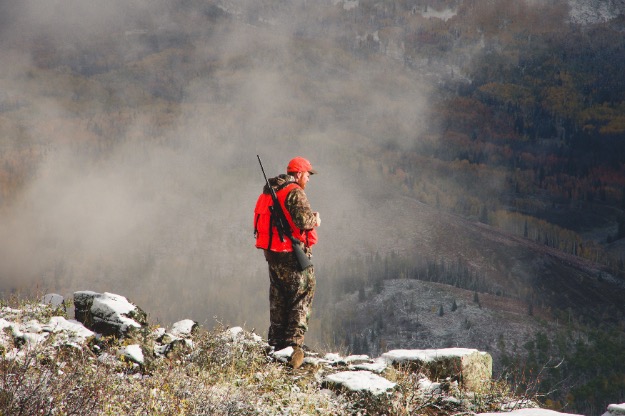
Editor’s Note: Cliff Hockett from Grand Junction, Colorado, started elk hunting when he was 12, and has been chasing those brown buglers for more than 15 years. Hockett has been a Mossy Oak pro for the last 3 years. His two favorite patterns for elk hunting are Mossy Oak Brush and Mossy Oak Treestand. Hockett explains, “My very favorite pattern is the Mossy Oak Duck Blind. However, since the Duck Blind pattern was created for waterfowl hunters, finding that pattern in lightweight clothing that I can wear for archery hunting is often difficult. The reason I like this pattern is regardless of where you hunt there's always going to be dry grass, and Mossy Oak Duck Blind looks just like dry grass. Colorado’s archery season for elk starts the last weekend in August and ends the last weekend in September. During this time of the year, our average temperatures are in the 80s, especially in the first 2 weeks of the season.”
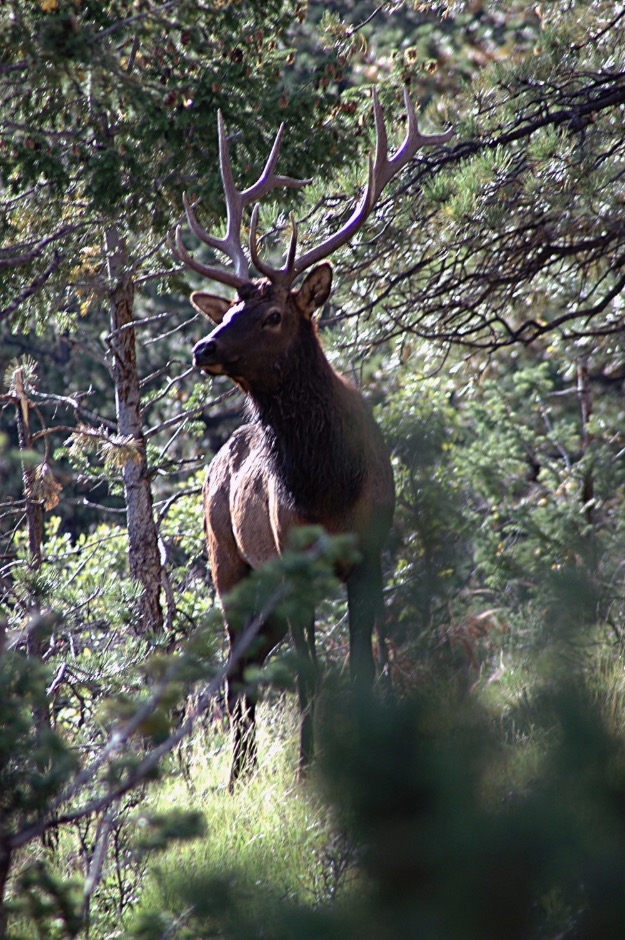 I started hunting elk when I was 12- or 13-years old. Up until that time, I always had gone with my Dad. I was 12-years old when I took my first elk. I had hunted turkeys with my dad from the time I was legally able to hunt. When I was 12-years old, Dad decided I had hunted enough and learned enough to hunt elk. I was an athlete back then. I played baseball and football and wrestled competitively.
I started hunting elk when I was 12- or 13-years old. Up until that time, I always had gone with my Dad. I was 12-years old when I took my first elk. I had hunted turkeys with my dad from the time I was legally able to hunt. When I was 12-years old, Dad decided I had hunted enough and learned enough to hunt elk. I was an athlete back then. I played baseball and football and wrestled competitively.
As far back as I can remember, anytime my dad took an elk, he'd call my mom and me, and we’d go and help him pack the elk out. They always let me pack out the head. I thought it was neat to be able to take a big ole elk’s head and antlers out in my pack. I had a .243 Remington, the smallest caliber allowed for big game hunting. I had shot a box of shells at a paper target set-up at 100 yards. My dad made sure that I could put the bullets within a 4-inch circle at 100 yards, before he would let me hunt. Dad also told me, “Unless you can get an elk in close enough, I’m not going to let you take the shot.” This is one of the reasons I wanted to start archery hunting, because I never took an elk with my rifle at more than 40 yards, and I knew I could shoot my bow very accurately out to 40 yards.
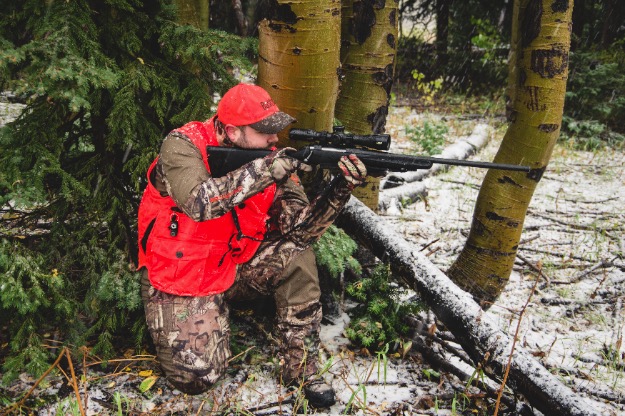 My dad and I drove to a trail head. Seven or eight trucks and campers were parked there. We walked up from the trail head just a little ways, and the trail split. It went to the right and to the left. Dad looked at me and said, “Do you feel like walking through these trees, even though it’s not light?” I said, “I’ll go wherever you want to go.” All the other hunters either had taken the trail to the left or to the right. We had only gone about 200 yards between the two trails before we started seeing elk. We waited until there was enough daylight for my Dad to determine if there was a legal bull with the cows that we could see. When Dad spotted a bull, he whispered to me. “Make sure you can see the elk’s shoulder, aim right behind the shoulder, and squeeze the trigger.” And that’s exactly what I did.
My dad and I drove to a trail head. Seven or eight trucks and campers were parked there. We walked up from the trail head just a little ways, and the trail split. It went to the right and to the left. Dad looked at me and said, “Do you feel like walking through these trees, even though it’s not light?” I said, “I’ll go wherever you want to go.” All the other hunters either had taken the trail to the left or to the right. We had only gone about 200 yards between the two trails before we started seeing elk. We waited until there was enough daylight for my Dad to determine if there was a legal bull with the cows that we could see. When Dad spotted a bull, he whispered to me. “Make sure you can see the elk’s shoulder, aim right behind the shoulder, and squeeze the trigger.” And that’s exactly what I did.
We were so close to the trail head that we could hear the other hunters who had parked at the trail head cooking breakfast. We even could hear the clanking of silverware against their plates. The elk were feeding in that area, and they weren’t making a sound. My dad had decided that no one had hunted this little obvious spot, because the two trails split, and trails were much easier to walk than going through the timber. This first elk hunt I went on proved to me that my Dad’s philosophy, “Hunt where no one else will hunt, and you’ll take bulls no one else will see.” I decided this was the best tactic for me to use for the rest of my life.
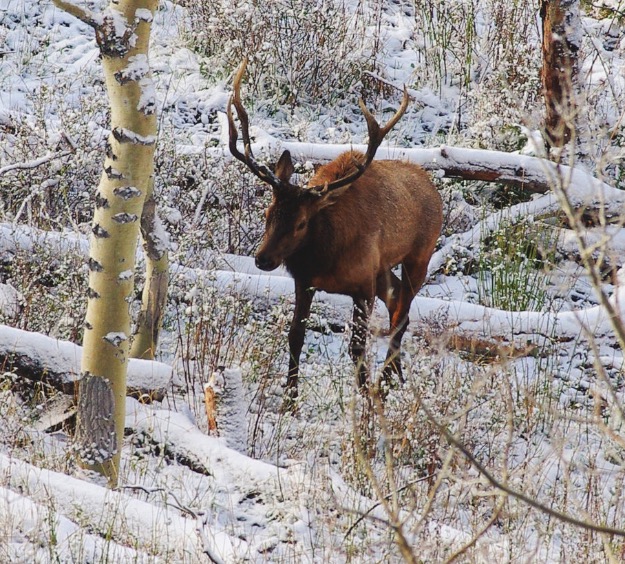 Dad had hunted this spot before and taken elk there, and he had decided that this place would be easy for me to hunt on my first elk hunt. It wouldn’t wear me out climbing mountains. The first bull I took was only a 4x4, but he was a legal bull, and I had shot him. After I shot, all the sounds from the other hunters eating breakfast stopped. When we started carrying my elk out, all the other hunters were at the bottom of the trail head trying to figure out what had happened. They asked my dad, “Did this little guy shoot that elk?” I just nodded. I don’t think I said a word.
Dad had hunted this spot before and taken elk there, and he had decided that this place would be easy for me to hunt on my first elk hunt. It wouldn’t wear me out climbing mountains. The first bull I took was only a 4x4, but he was a legal bull, and I had shot him. After I shot, all the sounds from the other hunters eating breakfast stopped. When we started carrying my elk out, all the other hunters were at the bottom of the trail head trying to figure out what had happened. They asked my dad, “Did this little guy shoot that elk?” I just nodded. I don’t think I said a word.
One of the most fun parts of the trip was Dad left the hide on the two hindquarters. Because the hill was so steep, I could sit on the hindquarters and slide down the hill to the trail head. When I got to the bottom of the hill, Dad would pick up the hindquarter and load it in the truck. We made three trips to get the meat out, but on two of those trips, I got to ride a hindquarter down to the truck. Since the hill was grassy, the hide would slide easily with me on it down the hill. I could slide about 20 or 30 yards before I’d have to get off the hindquarter to get it over a rock or log. Then, I’d slide about 20 or 30 more yards. When the guys at the trailhead saw me sliding down the hill on the hindquarter, they were laughing, pointing and punching each other. I guess they'd never seen a youngster slide down a hill sitting on an elk hindquarter. I think this was the most fun I ever had had getting elk meat from where we had shot the elk back to the truck.
If I had one piece of advice that I believe could help any elk hunter who hunts public land, it would be to always look for places you really don’t want to hunt and hunt them. If you don’t want to go to those spots, neither does any other hunter. Make getting your elk meat out a major part of your hunting adventure. Don’t dread being successful. Instead, look forward to packing out the meat.
To learn more about hunting, check out John E. Phillips’ new eBook, “Bowhunting Deer: Mossy Oaks Pros Know Bucks and Bows.” You also can download a free Kindle app that enables you to read the book on your iPad, computer or SmartPhone.
For information on making jerky from your elk and other big game animals to provide a protein-rich snack, you can download a free book.














